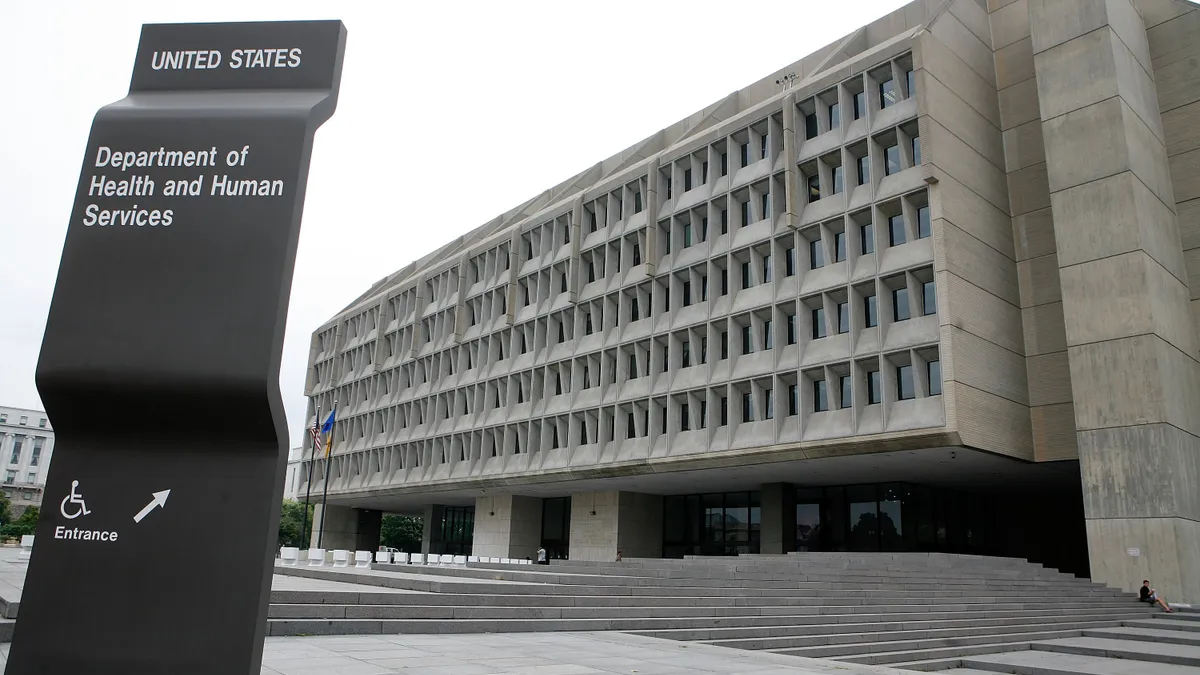Dive Brief:
- Fired HHS employees are suing the Trump administration for illegally terminating thousands of employees in the federal health department’s spring restructuring based on incorrect records.
- Seven affected staffers filed the lawsuit, which seeks class-action status, Tuesday in a D.C. district court against the HHS, the Department of Government Efficiency and other agencies and top leaders in the Trump administration.
- The lawsuit seeks monetary damages for HHS employees who were let go with termination notices that contained errors. Lawyers estimate that most of the roughly 10,000 employees who were fired during the April reduction-in-force, or RIF, would be members of the class.
Dive Insight:
The HHS began notifying employees that they would be laid off on April 1 as part of a departmental restructuring, amid the Trump administration’s larger push to drastically reduce the federal workforce.
The process was quickly dogged with questions about its legitimacy, with many affected staffers noting that termination notices included incorrect performance scores, office names and other information.
Healthcare Dive has reported extensively on the potential illegality of the RIF, including paperwork issues, the closure of congressionally mandated offices and inconsistencies with how the Trump administration decided which employees to terminate.
Now, a group of terminated HHS staffers are suing over the “hopelessly error-ridden” personnel records that were used to underpin the cuts.
Performance ratings, which range from 1 to 5 and are assigned to federal staff to appraise their performance, were frequently wrong on RIF notices, the workers allege in their suit. In addition, employees’ paperwork had seemingly random codes determining their eligibility for the RIF, and informed them that their entire division was being terminated when it wasn’t.
Such errors are a major point of concern, given that data affects whether a specific employee should have been caught up in a RIF, their severance pay and the availability of stopgap healthcare coverage — and can affect future career prospects.
HHS’ actions violated the Privacy Act, which gives individuals recourse if an agency acts on the basis of inaccurate personnel records, according to the suit.
An HHS spokesperson declined to comment, citing the ongoing litigation. However, the agency in the past has blamed siloed and disorganized recordkeeping for discrepancies in RIF paperwork.
“It is, of course, little solace to these Plaintiffs that they were fired because of ‘siloed’ recordkeeping. Nor is it any comfort to know that many of them had been fired by ‘mistake,’” the lawsuit reads. “For these Plaintiffs, HHS’s intentional failure to maintain complete and accurate records before making life-changing employment decisions was a clear violation of the law.”
HHS Secretary Robert F. Kennedy Jr. has publicly acknowledged that mistakes were made during the restructuring due to the agency’s desire to move quickly, and pledged to reinstate staff who were improperly let go. The HHS has since rescinded RIF notices for hundreds of employees. However, the secretary has brushed off ongoing concerns about the cuts and failed to provide a comprehensive accounting of the layoffs.
“Because the decisionmakers at these agencies were working with such flawed data, they barely knew who they were cutting,” Clayton Bailey, a lawyer at the Civil Service Law Center, which is bringing the suit, said in a statement. “These employees suffered the consequences.”
The RIF was supposed to go into effect early June. However, the firings were paused after a California federal judge issued an injunction in a separate lawsuit over the administration slashing the federal workforce without Congress’ say-so.
A group of states are also suing the Trump administration seeking to undo the HHS cuts, arguing the department’s critical health work has been stymied as a result of the restructuring.
Many affected workers remain on administrative leave.














